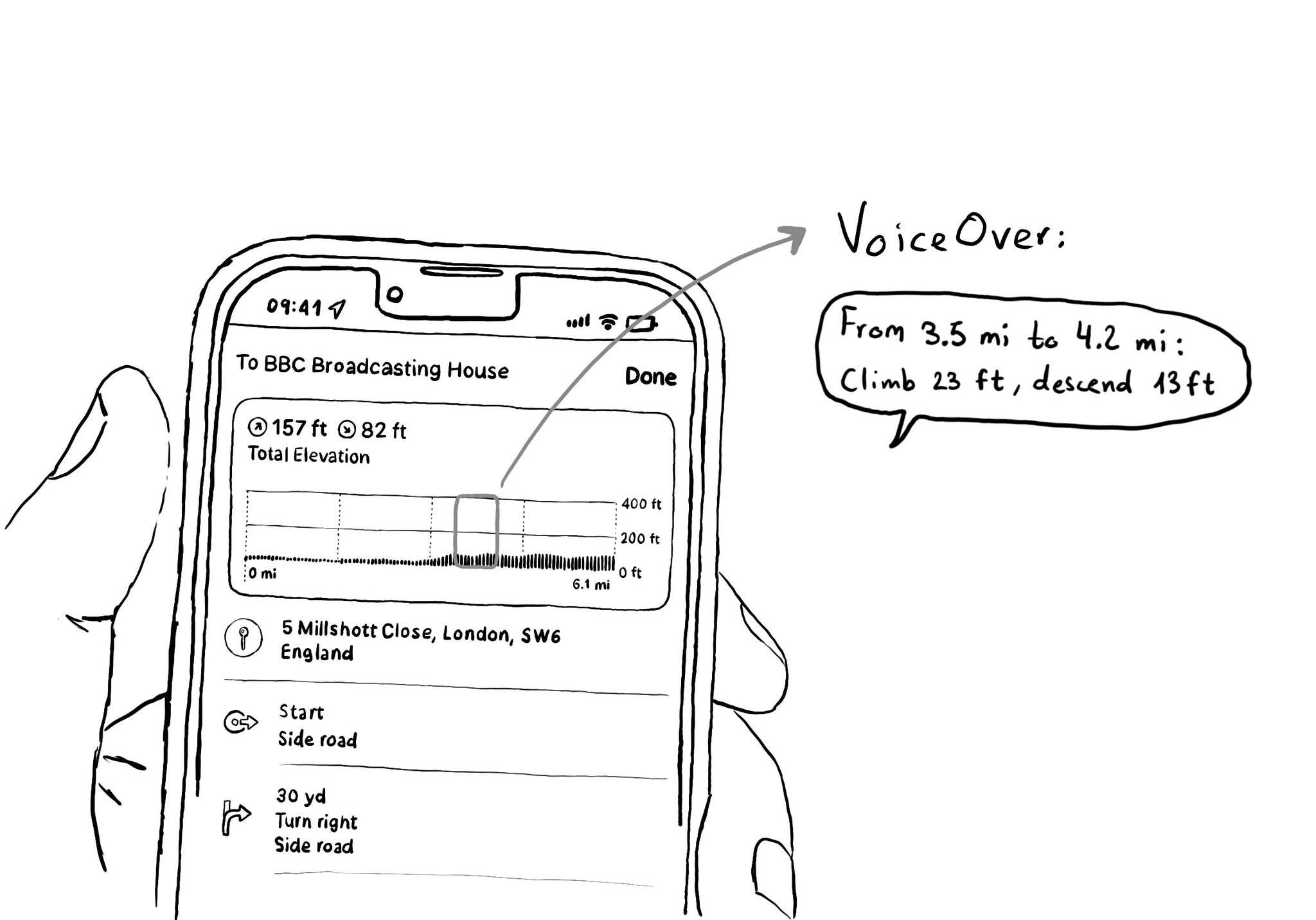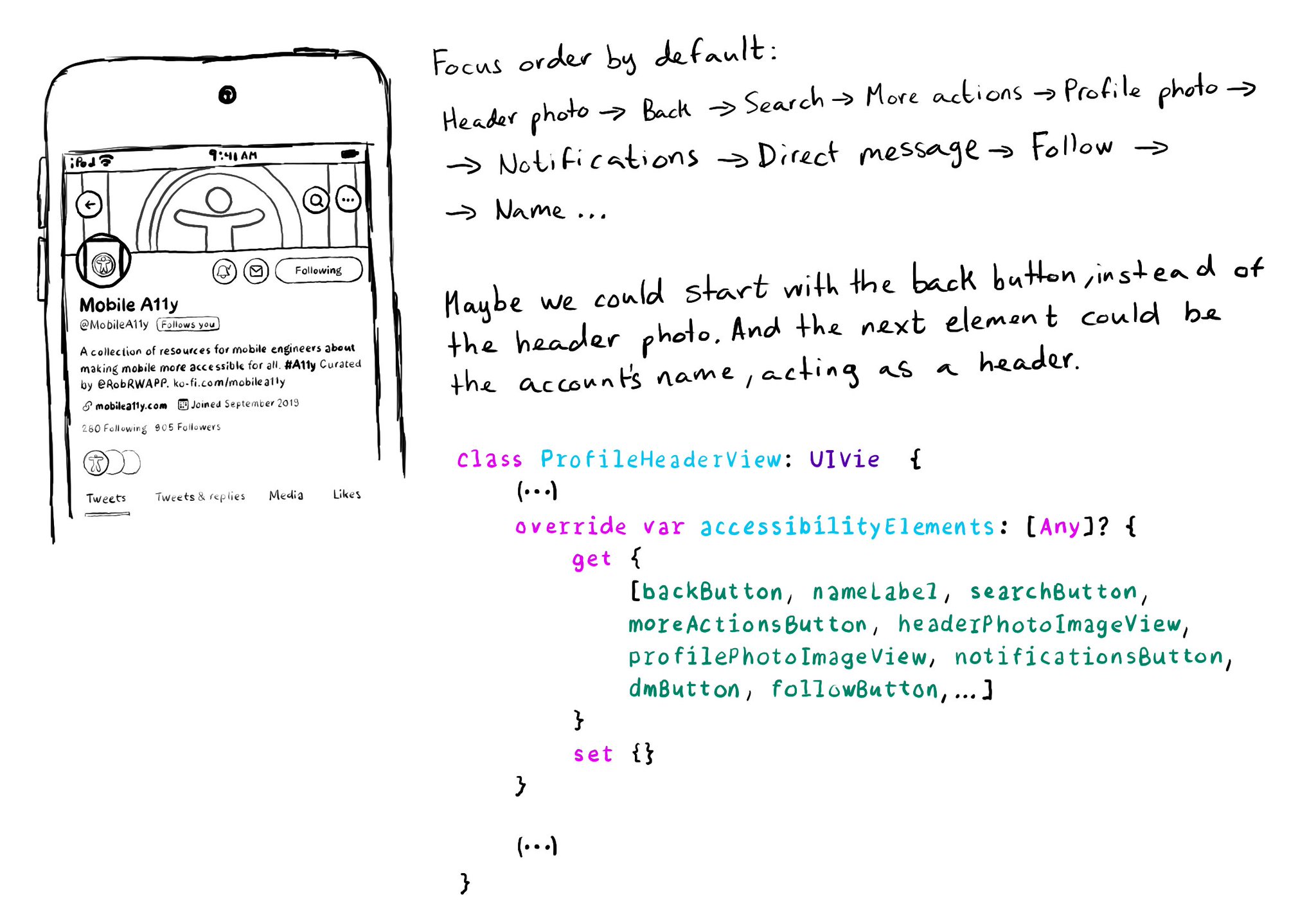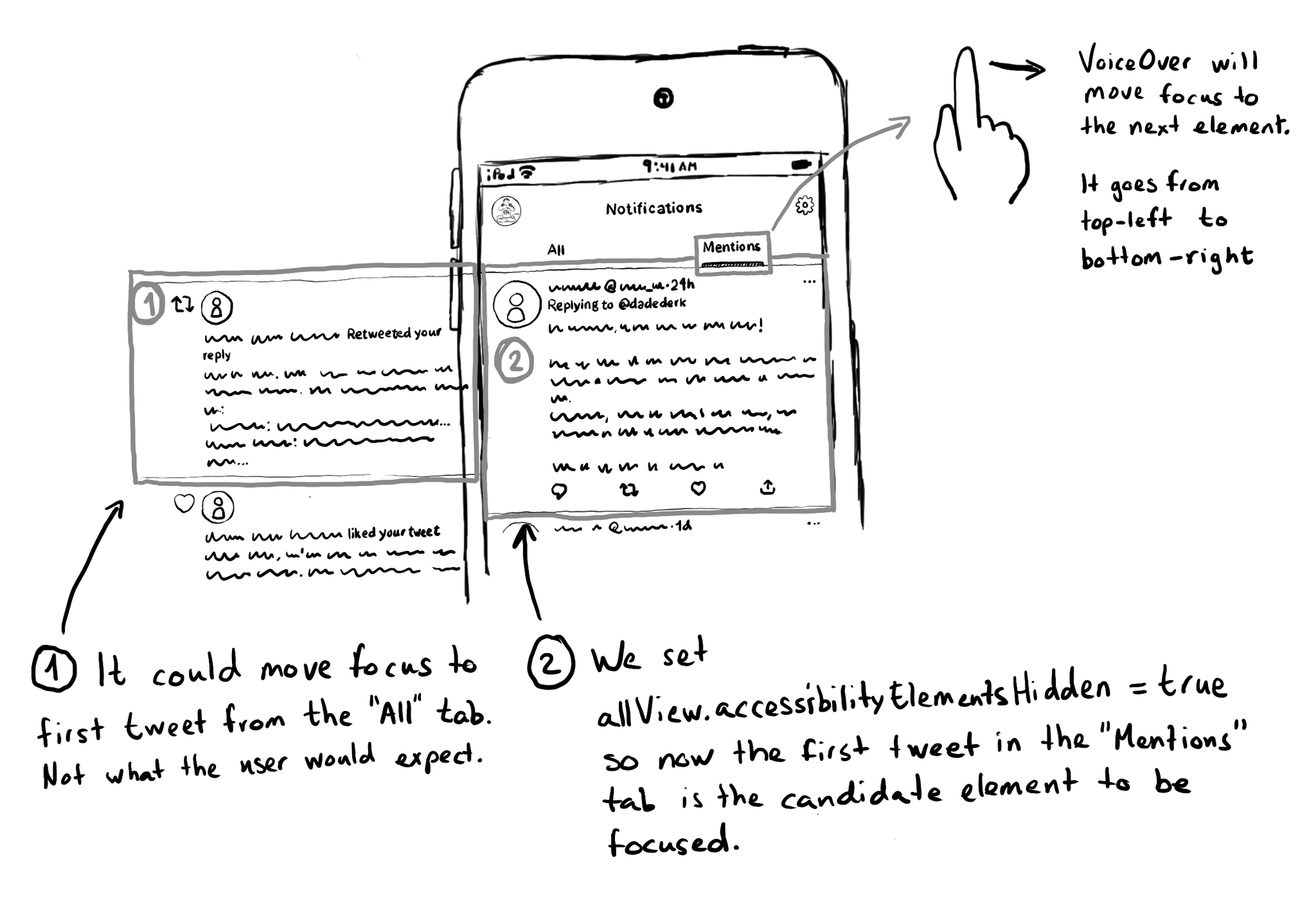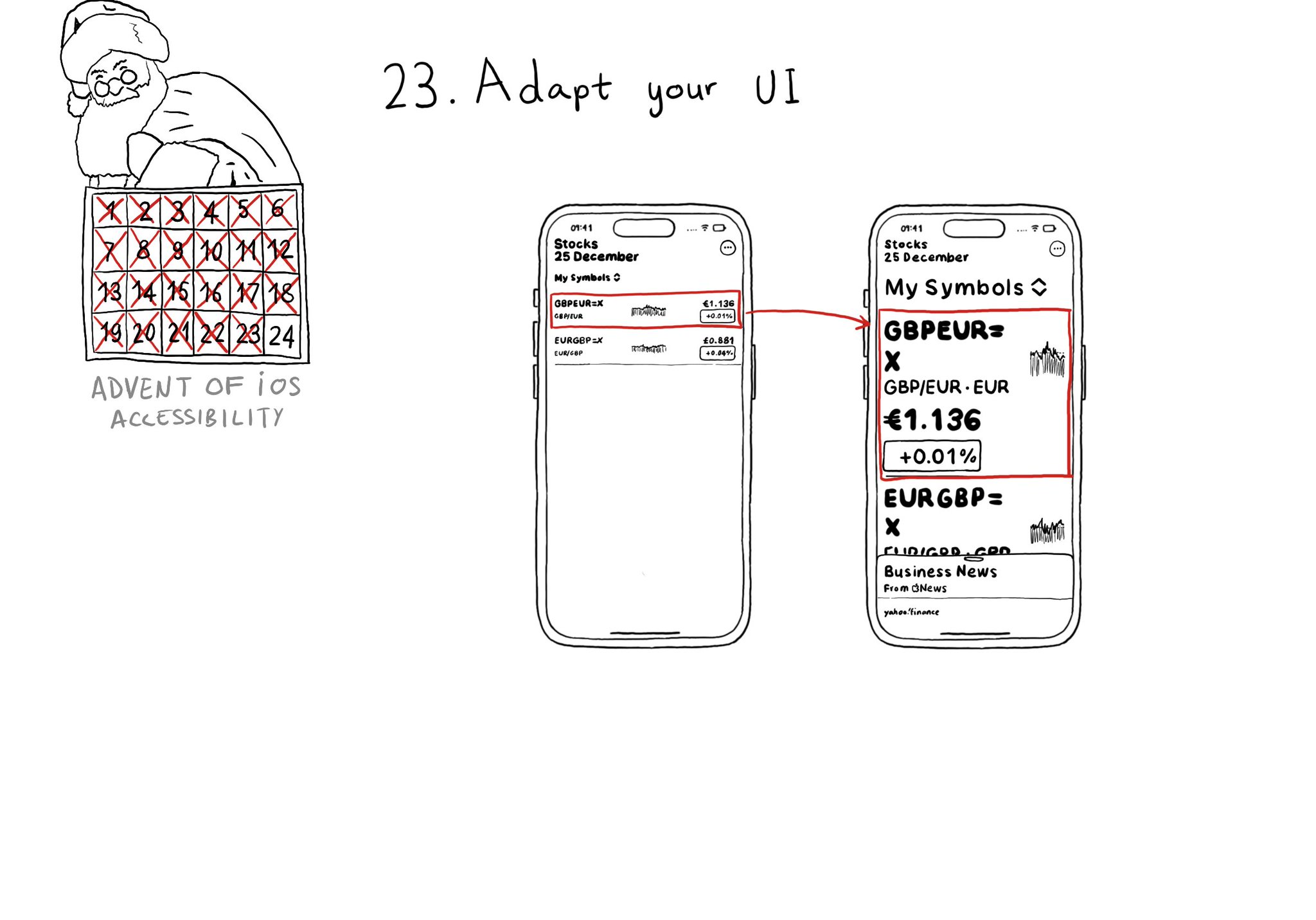When making charts accessible, sometimes you may have just too many data points for the user to have to go one by one through all of them. In those cases, you can create accessibility elements that represent meaningful chunks of the graph.

You may also find interesting...

It is possible to change the traversing order of accessibility elements by configuring the accessibilityElements array. You should try to avoid it, but one good reason for doing it is if the default order is illogical because of the visual layout.

If you need for a view (and all its subviews) not to be focusable by assistive tech like VoiceOver, you can set its accessibilityElementsHidden property to true. This isn't needed very often, but it can be useful for certain custom experiences.

Sometimes your UI will just not scale for large text sizes. Simple changes, for large sizes, like disposing elements vertically instead of horizontally, reducing the number of columns, and allowing more lines of text, can do the trick most times.